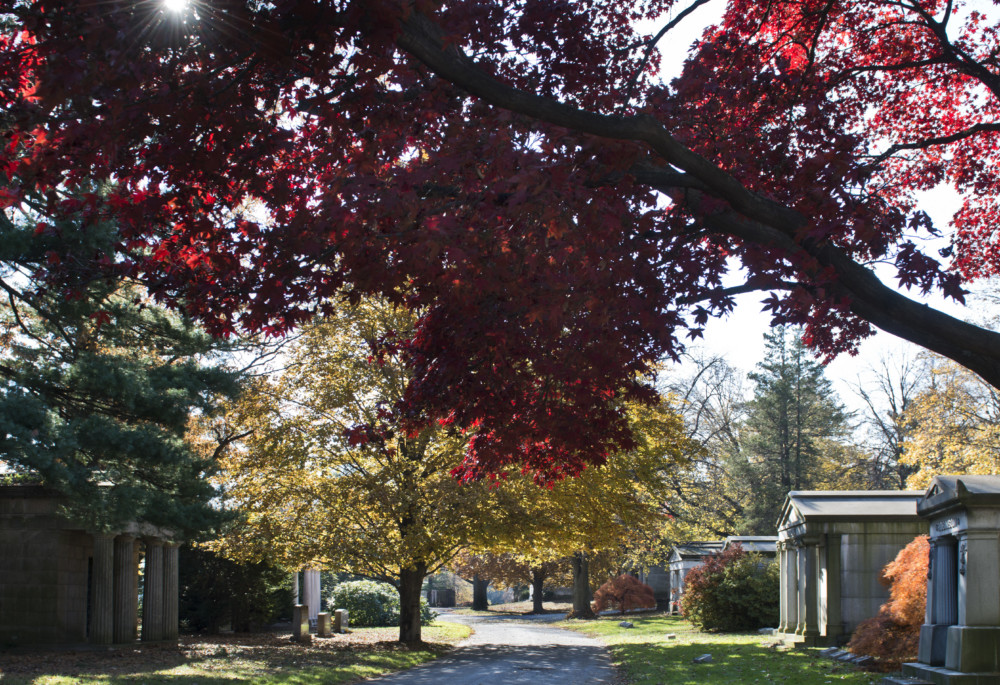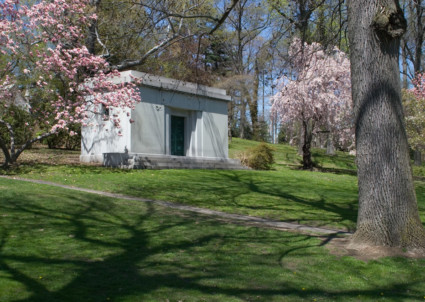Woodlawn Cemetery
517 East 233rd Street
Founded 1863
NHL, NR-P
Woodlawn Cemetery is considered to be one of the most beautiful cemeteries in the United States. Roughly bounded by East 211th Street to the south, East 233rd Street to the north, Webster Avenue to the east and Jerome Avenue to the west, the cemetery encompasses 400 acres. Founded in 1863, its location was considered remote enough for a burial site, but still accessible via the New York and Harlem railroad from Manhattan. The development of the cemetery in this relatively rural area followed the New York Legislature’s 1847 Rural Cemeteries Act, which authorized commercial burial grounds and encouraged the establishment of such resting places outside of the growing city, as well as an 1852 law prohibiting burials within the city limits by the Common Council of New York City. Prior to this legislation, burials took place almost exclusively in churchyards. The founders of Woodlawn Cemetery, led by Reverend Absalom Peters, acquired the majority of the land through a state charter authorizing the establishment of a cemetery, purchasing the initial 313 acres from a farm owned by the Bussing family.
In the mid-19th century, Romantic-style cemeteries were fashionable as retreats from city life. These cemeteries functioned not only as places of burial, but also as the precursor to major public parks. The Romantic style of landscape design was championed in America by Andrew Jackson Downing, and featured curvilinear pathways, undulating topography, air-purifying trees and picturesque views popularized in British gardens of the 18th century. Woodlawn is one of the city’s hallmark Romantic cemeteries, initially designed by Philadelphia architect James C. Sidney in the rural cemetery tradition, incorporating the existing topography, trees and a serene lake to be harmonious with the site’s history as a farm and woodland. In 1867, Sidney’s plan was altered to allow for larger, centralized family monuments surrounded by low grave markers and property boundaries. Woodlawn’s trustees turned to another landscape professional, Robert Edward Kerr Whiting, to take charge of the cemetery plan and its undeveloped sections. Whiting was familiar with the new “landscape lawn plan,” a concept developed by landscape gardener Adolph Strauch at the Spring Grove Cemetery in Cincinnati, Ohio. As the name suggests, the landscape lawn plan incorporates open and continuous grassy lawns. The fenceless and hedgeless landscape and ground-level grave markers produced unencumbered vistas, interspersed with elegant stone monuments. For Woodlawn Cemetery, the result was a public recreation space in a picturesque and sweeping landscape. The half-park, half-cemetery characteristics of Woodlawn invite contemplation and meandering.
The Woodlawn Cemetery was designated a National Historic Landmark in 2011, and bears the distinction of containing the largest architecturally significant collection of historic private mausoleums (1,271) of any cemetery in the country. Many accomplished individuals are buried here, including Nellie Bly, Celia Cruz, Duke Ellington, Collis P. Huntington, Philip Lehman, Herman Melville and Elizabeth Cady Stanton.

